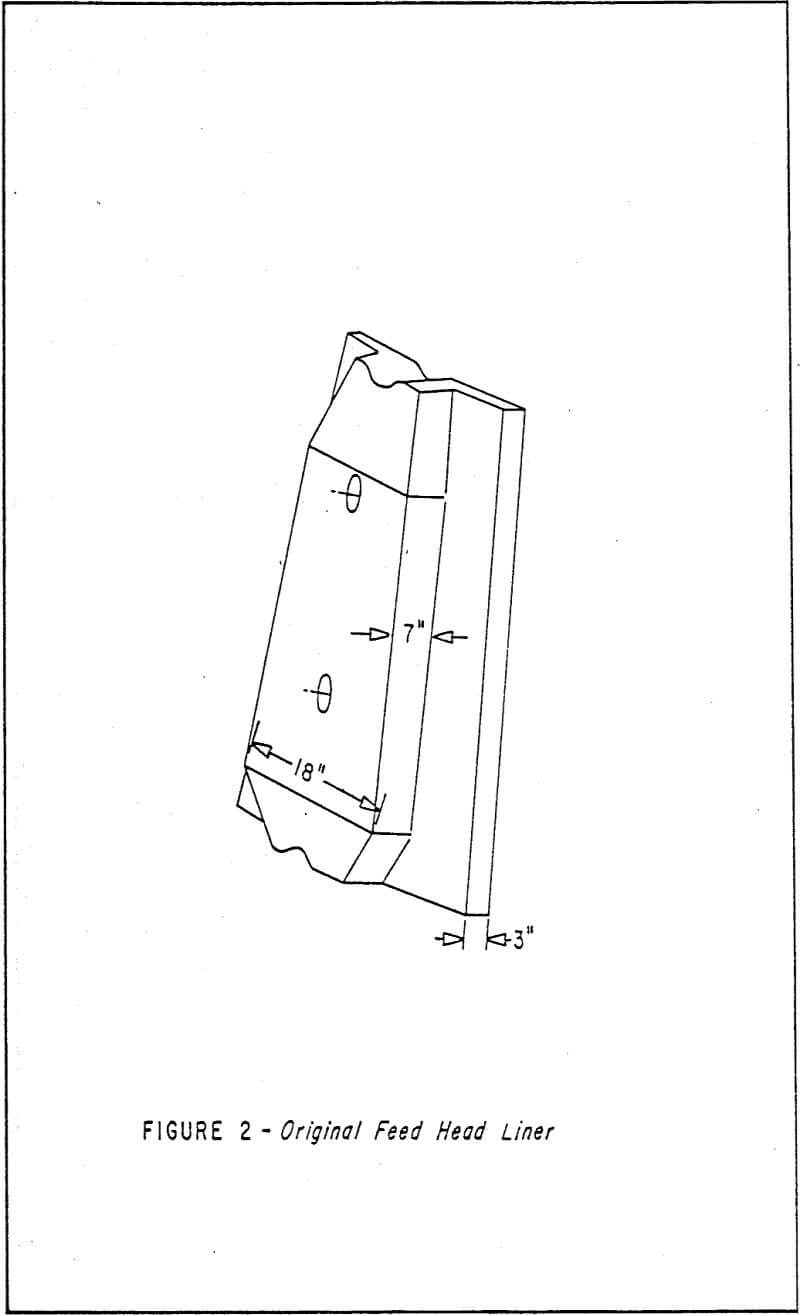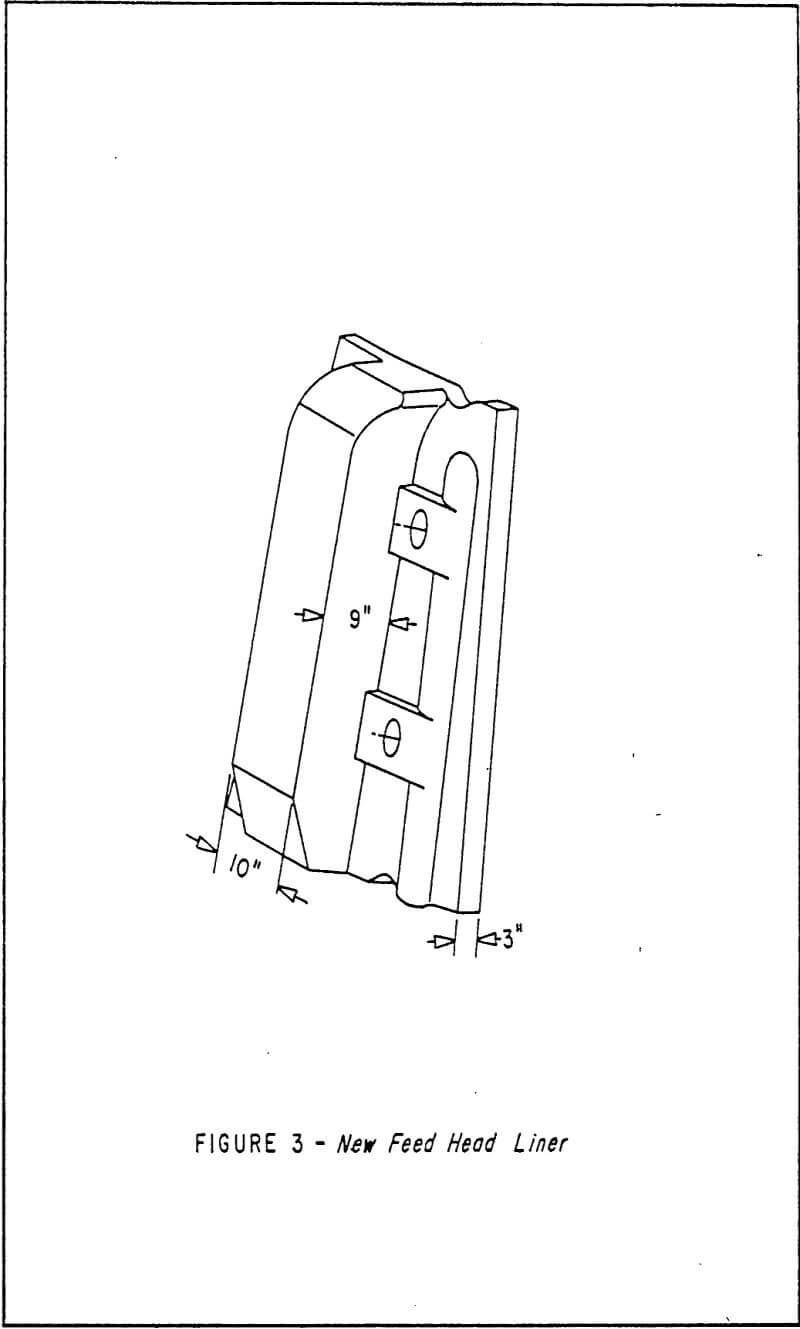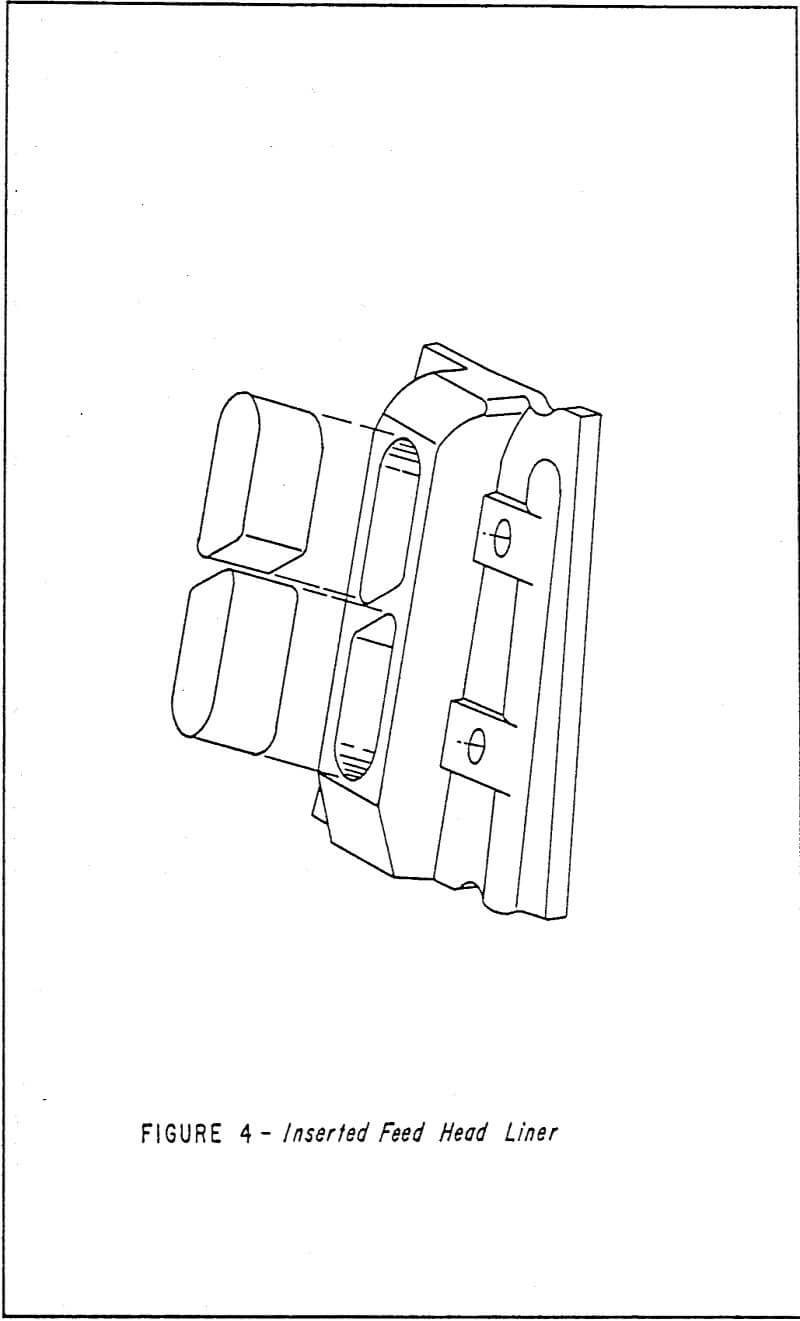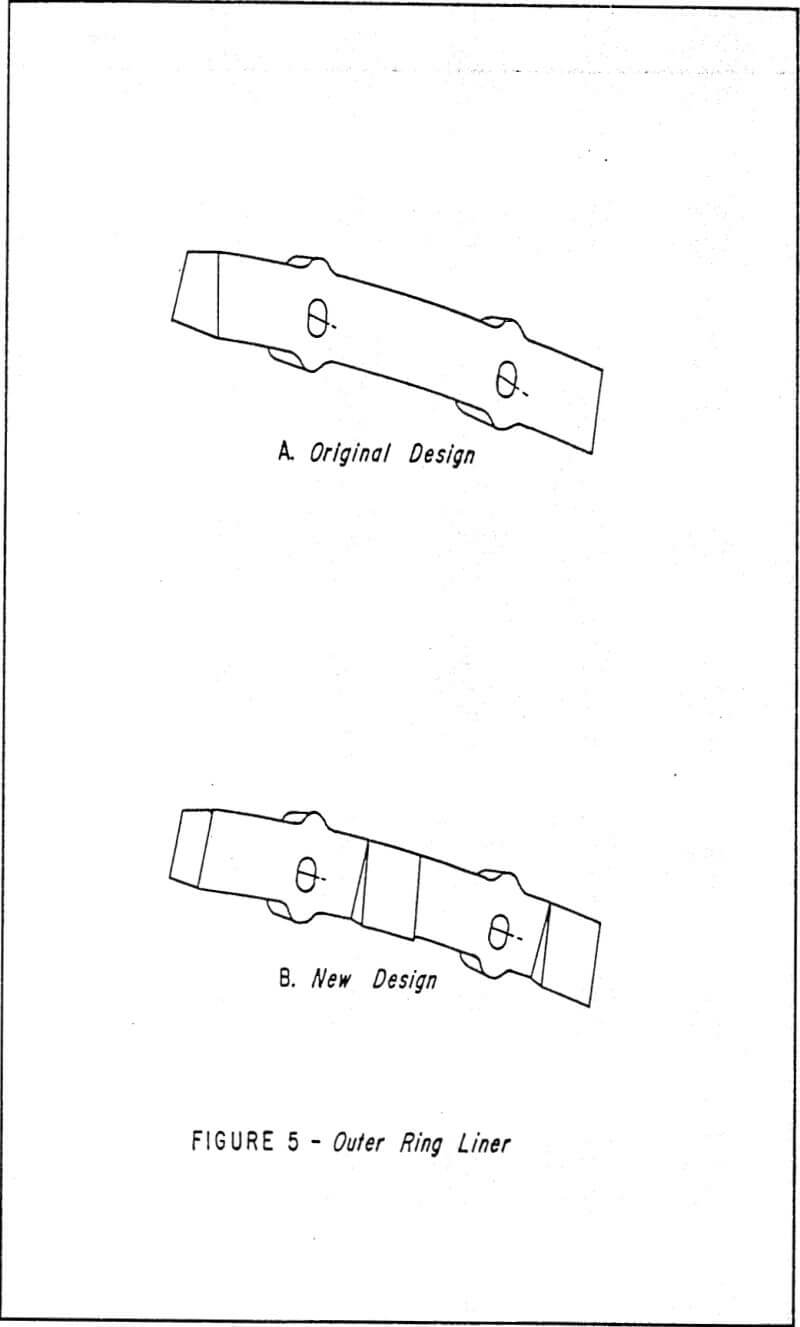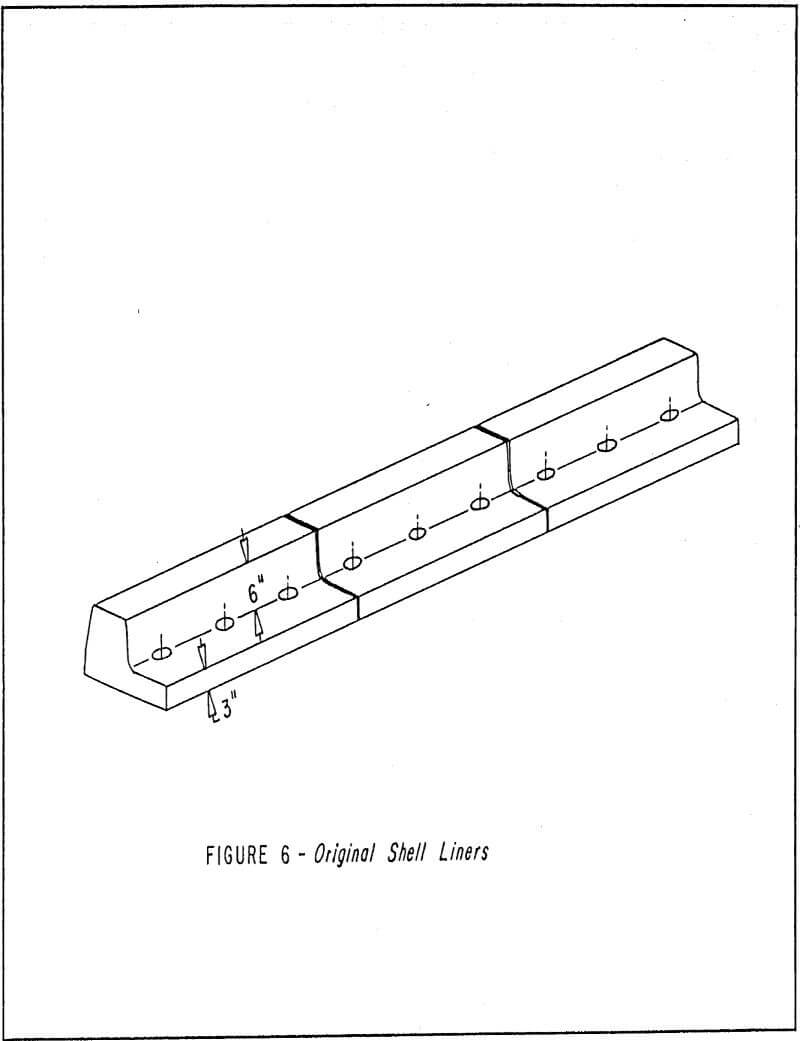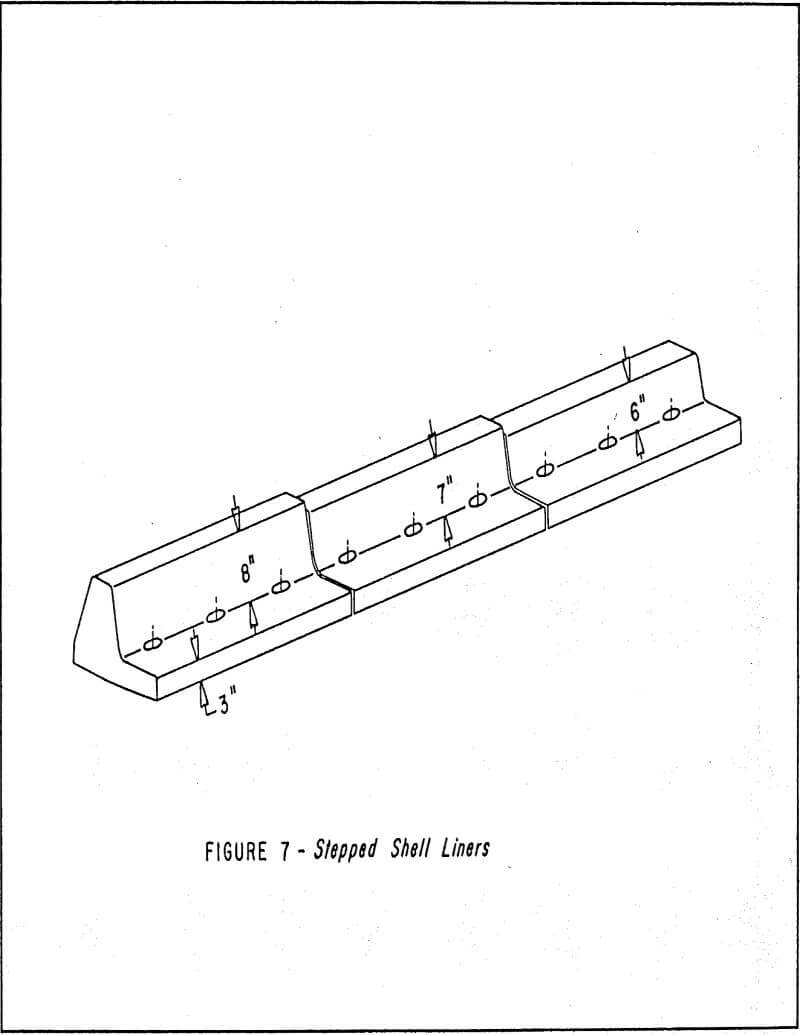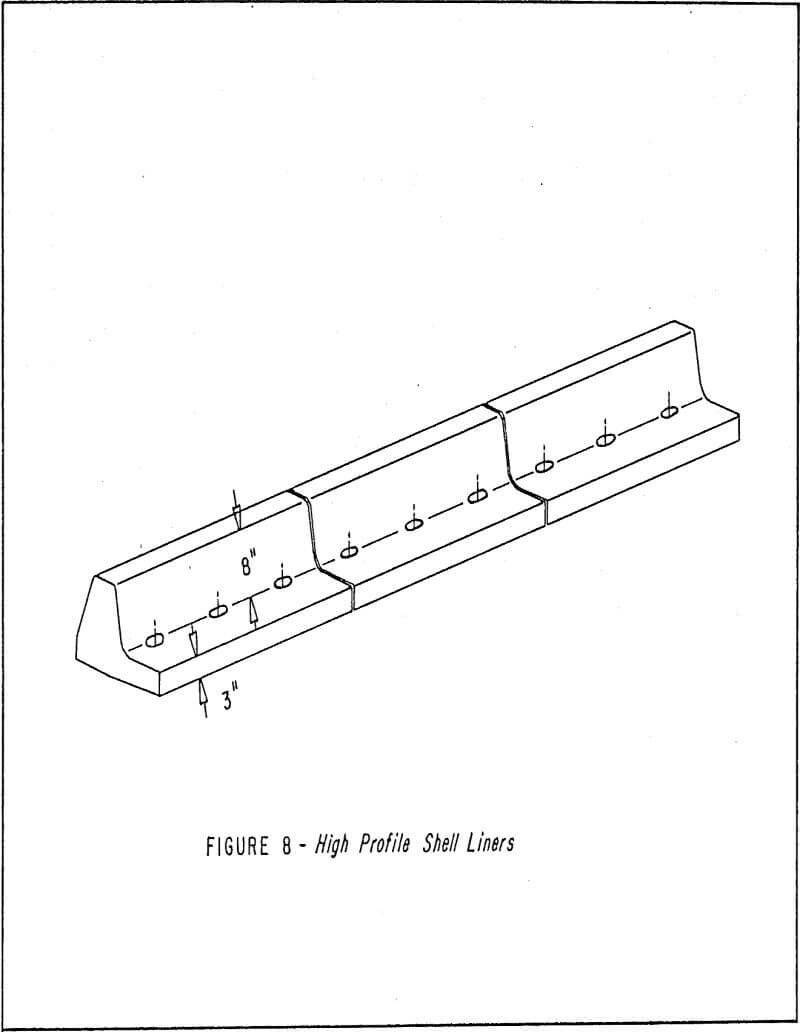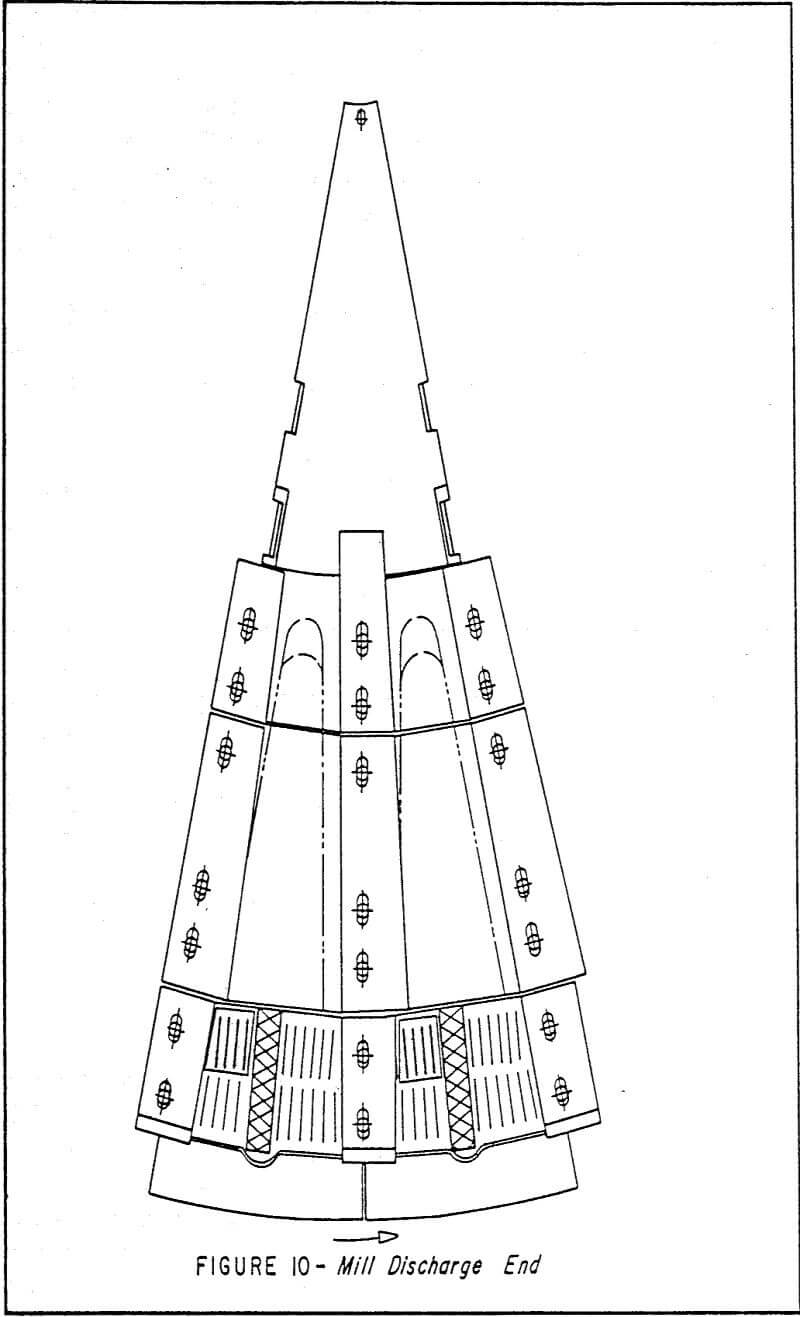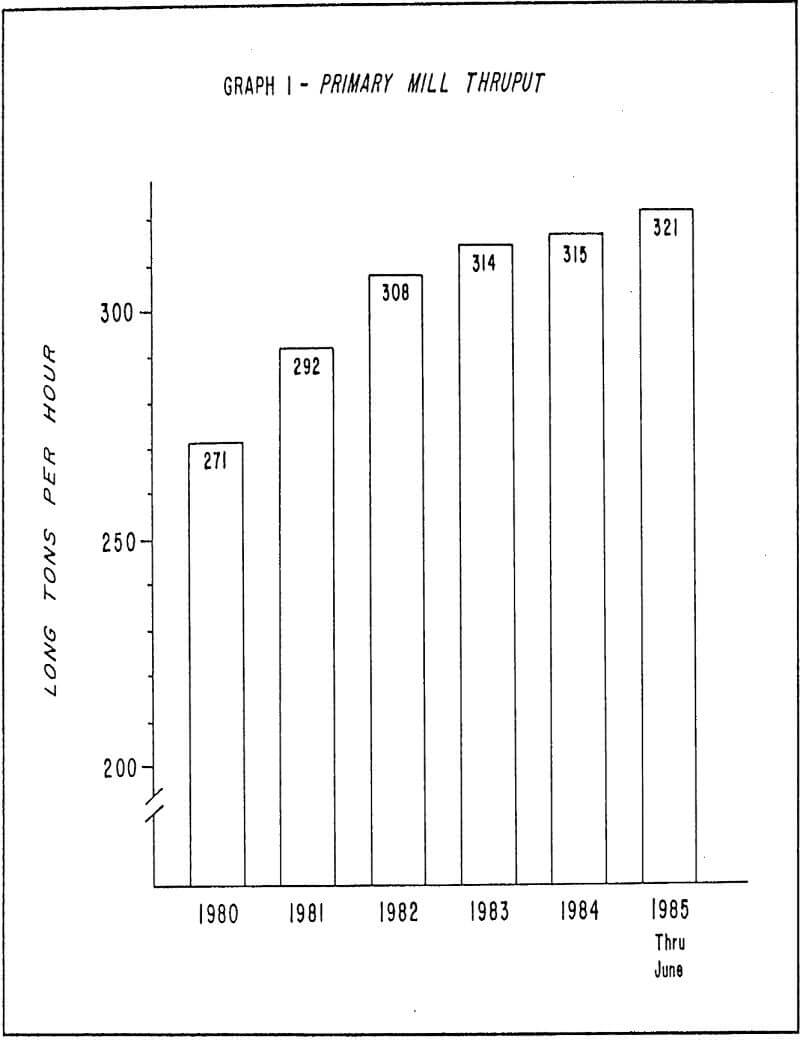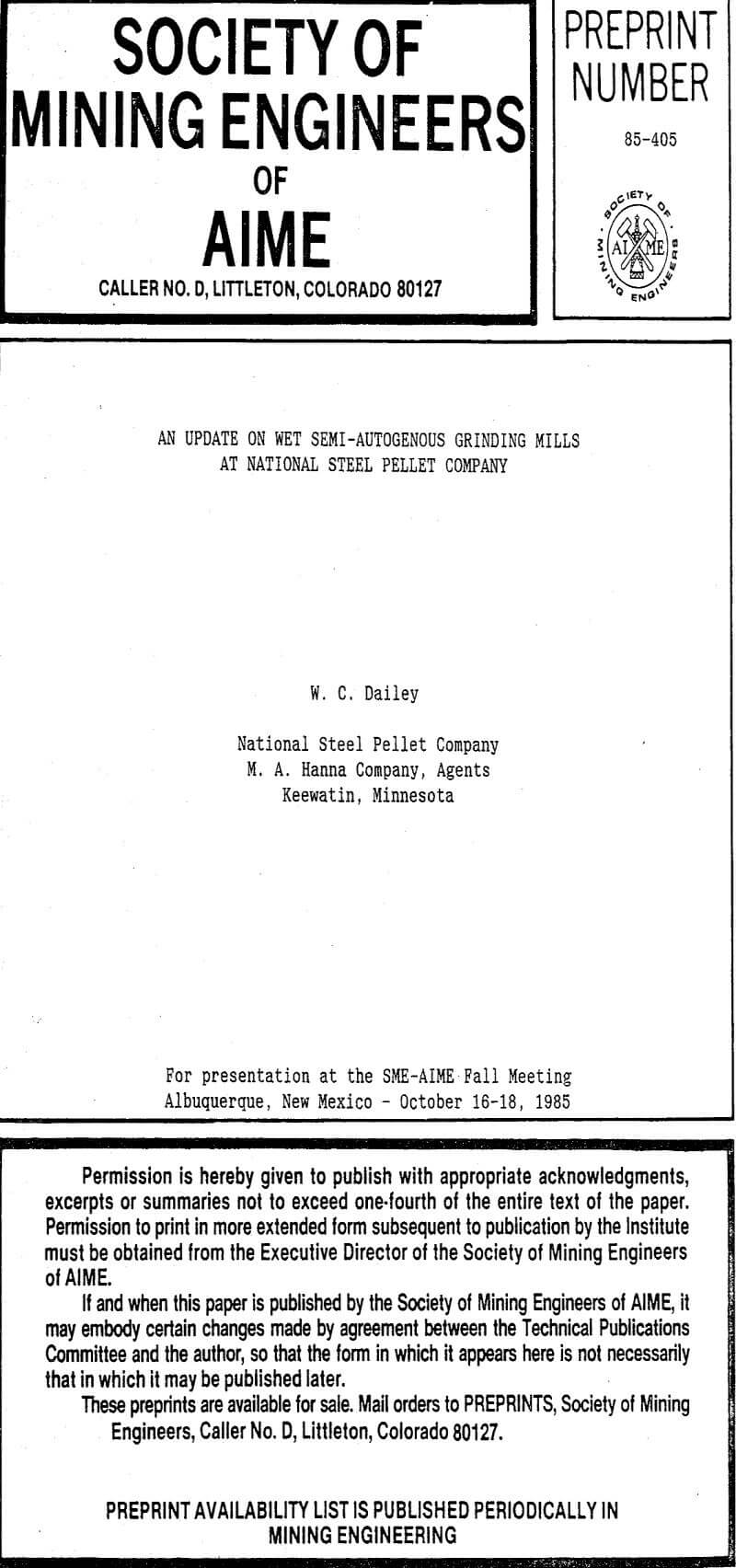The primary mill liner task force was formed in 1977. Its function was to improve the operating costs and milling efficiencies of the ten 8.2-m x 5.5-m (27 ft x 18 ft) wet SAG mills that were operating at the time. The SAG mills are driven by two 3500 HP motors drawing a total of 5450 kW at 76% of critical speed.
In March 1981, a liner metallurgy change was made. The original liners were made of WS-7HM which is a 400 Brinell hardness, martensitic Cr-Mo steel. This was changed to a WS-222 material which is a 500 Brinell, martensitic Cr-Mo steel. This metallurgy change in the feed head liner gave a 61% increase in liner life, a 38% decrease in liner consumption and a total material cost saving of 7%.
Analysis of wear patterns on the shell liners showed that most of the wear was taking place at the feed end liner of the mill. At changeout it was observed that there was a considerable amount of steel left on the center and discharge liners. To compensate for this, it was decided to re-design the liners. This design was referred to as the stepped liner profile in that they step down as you go from the feed end to the discharge end of the mill.
Design changes in the 19-mm (0.75 in) radial slotted grates have been made. The grate thickness was increased from 76-mm (3 in) to 102-mm (4 in) without a decrease in throughput. The grate was also padded (extra wear material) in the high wear area of the liner.
It was found that by reducing the average feed size to the SAG mills, the mill thruput increased. Previously, the pit was drilling blast holes with a 11.0-m x 11.0-m (36 ft x 36 ft) spacing. The spacing was reduced to 9.8-m x 9.8-m (32 ft x 32 ft) in most ore blasts and to 9.1-m x 9.1-m (30 ft x 30 ft) in ore blasts that have hard ore that tends, to break in large chunks.
Ball size was increased, from 102-mm (4 in) to 127-mm (5 in) in diameter to improve grinding of the larger material in the mill feed. The increased ball size has increased primary mill throuput 15.2-t/h (15 lt/h).

